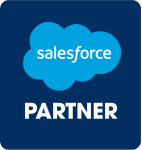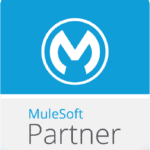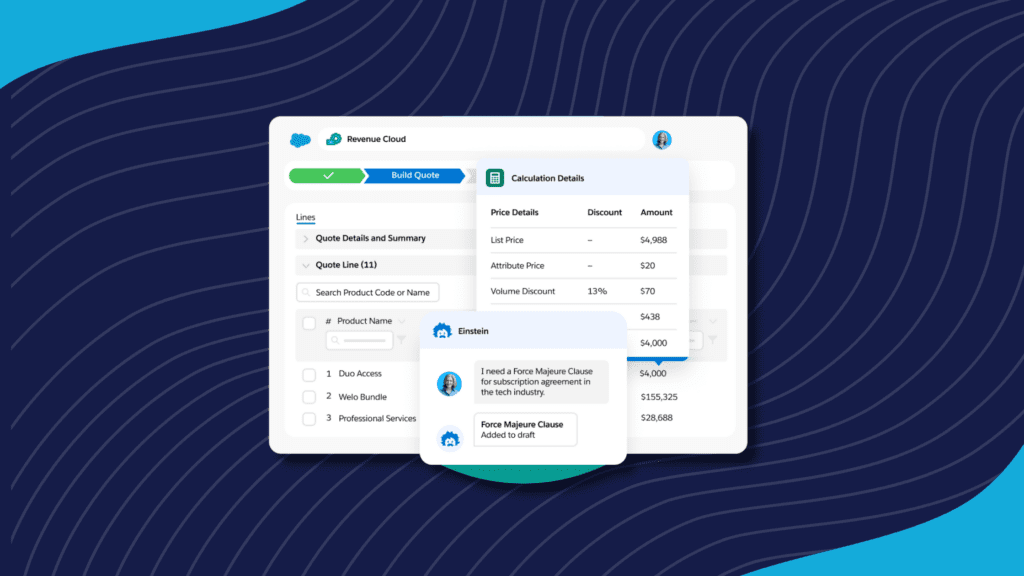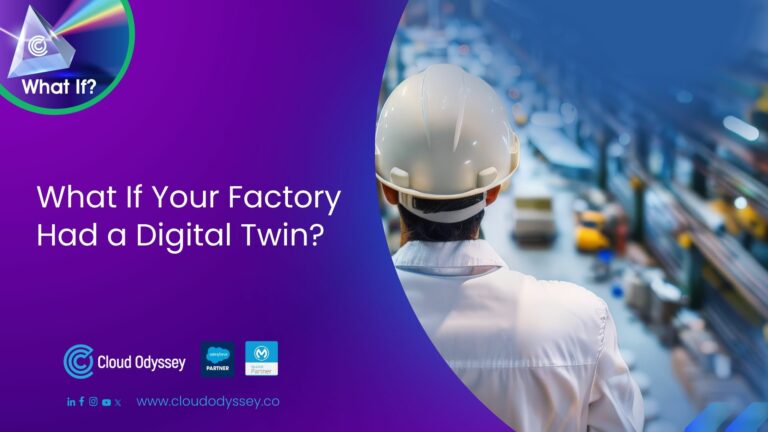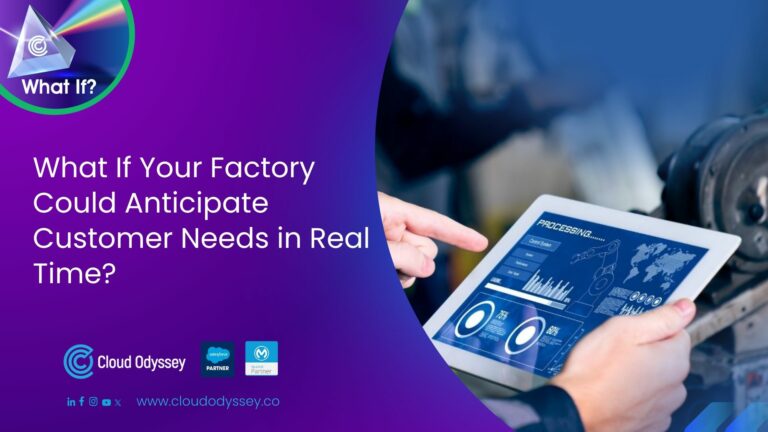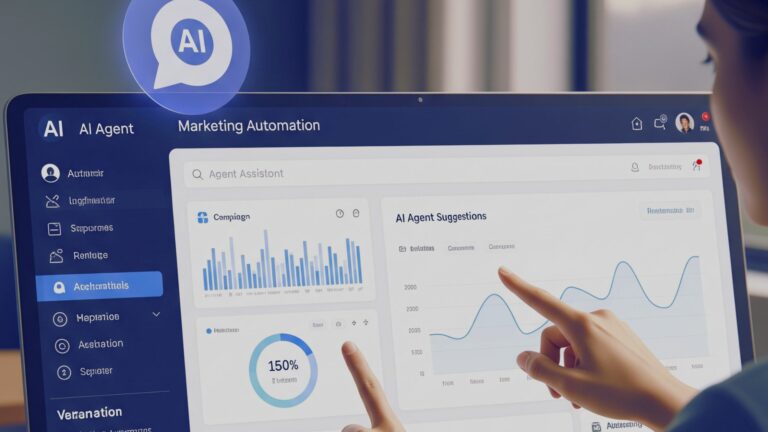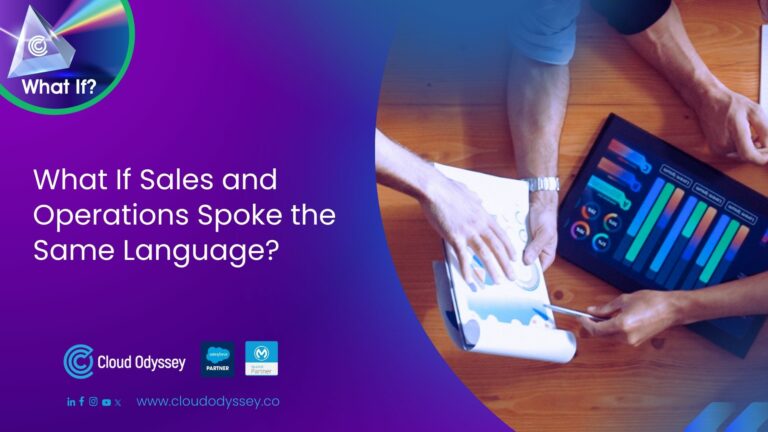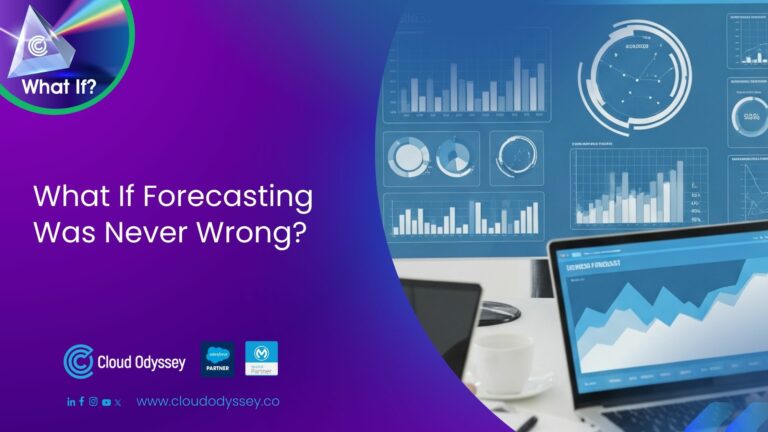In today’s fast-paced business environment, businesses need to be flexible, fast and responsive to be successful. Very often however they struggle to keep up with customer expectations due to inconsistent pricing and quoting, complex sales processes, misalignment between sales and finance teams, and a lack of real-time visibility into revenue data.
To address these challenges, Cloud Odyssey recently hosted a webinar titled “Beyond CPQ – Salesforce Revenue Cloud.“ In this session, Michael Kiruba-Raja (Senior Director at Salesforce) and Deepak Gupta (Practice Lead at Cloud Odyssey) shared actionable insights on optimizing revenue management with Salesforce Revenue Cloud. Below, we highlight key takeaways from this insightful discussion.
Challenges in Revenue Management
As B2B commerce continues to evolve, businesses must embrace new models to remain competitive. Consider these industry trends:
- 42% of B2B revenue comes from partners (Forrester).
- 75% of B2B buyers now prefer purchasing online (Gartner).
- 66% of SaaS companies saw revenue growth by adopting consumption-based pricing (Bain & Company).
These statistics highlight the increasing need for seamless omnichannel solutions and flexible pricing models to meet evolving customer expectations.
However, despite these shifts, many businesses are still stuck in outdated systems. During the webinar, Michael and Deepak highlighted the challenges businesses face today, including:
- Disconnected quoting and contracting, which causes delays and confusion.
- Siloed data, making it hard to get a unified view of different revenue streams.
- Outdated systems, which struggle to support complex revenue models like subscriptions, one-time purchases, and usage-based billing.
With so many businesses still operating in fragmented silos, there’s a real risk of losing valuable revenue opportunities and, worse, customers.
The Solution: Salesforce Revenue Cloud
This is where Salesforce Revenue Cloud comes in, where all your disconnected systems come together—where quoting, contracting, ordering, and billing are no longer separate processes, but part of a seamless, unified flow.
Salesforce Revenue Cloud is designed to unify the entire revenue lifecycle on a single platform. Its modular and composable architecture enables businesses to automate manual tasks, unify their data, and gain real-time insights.
The Seven Pillars of Salesforce Revenue Cloud
Salesforce Revenue Cloud offers a comprehensive suite of tools built on a composable architecture, allowing businesses to select and implement only the capabilities they need.
These tools are grouped under the seven pillars of Salesforce Revenue Cloud, as introduced by Deepak during the webinar, highlighting the interconnectedness of product design, pricing, CPQ, CLM, order management, billing, and revenue intelligence.

- Product/Service Design: A unified catalog to display products seamlessly across all digital platforms.
- Price Management: Flexible pricing models that support one-time purchases, subscriptions, and volume discounts.
- CPQ / Transaction Management: Effortless product configuration and pricing.
- Contract Lifecycle Management (CLM): A smooth, integrated contract process from creation to execution.
- Order Management: Optimized order fulfillment that integrates with external systems like inventory and shipping.
- Billing & Collections: Automated invoicing and billing to ensure accuracy.
- Revenue Lifecycle Intelligence: AI-driven insights that help you understand your revenue like never before.
Together, these pillars create a robust framework that enables businesses to scale, adapt, and thrive.
At this stage, Deepak went on to share a demo on Revenue Transformation with Salesforce Revenue Cloud.
The Power of Agentforce in Salesforce Revenue Cloud
What truly sets Salesforce Revenue Cloud apart is its AI-driven capabilities. By leveraging AI and automation, businesses can streamline critical processes, making them faster, smarter, and more accurate. Key AI features include:
- Automated Quote Creation: AI simplifies the quoting process, reducing manual effort and enhancing accuracy.
- Smart Discounting: AI provides insights that recommend optimal discount levels for each customer, streamlining approval workflows.
- Order Tracking: Gain real-time visibility into orders, from creation to fulfillment, ensuring customers are always informed.
These intelligent features reduce operational friction, allowing teams to focus on high-value tasks and ultimately improving the overall customer experience.
The Future of Revenue Cloud
Salesforce isn’t stopping here concluded Michael. The future of Revenue Cloud is bright, with even more innovations on the horizon:
- Advanced automation to further streamline revenue processes.
- Expanded AI functionalities to make intelligent decisions faster.
- Simplified deployment to make it easier for businesses to implement the platform.
With three major Salesforce releases each year, the platform is continuously evolving to stay ahead of the curve.
Final thoughts
As the webinar wrapped up, it became clear: Salesforce Revenue Cloud isn’t just a tool—it’s a game-changer. It empowers businesses to transform their revenue management with automation, AI, and a unified platform. This is the story of businesses breaking free from outdated, fragmented systems and stepping into a future of streamlined operations and sustainable growth.
At Cloud Odyssey, we’ve seen firsthand how Salesforce Revenue Cloud can unlock new potential for businesses. As a Salesforce Summit Partner, our team is dedicated to helping organizations navigate their digital transformation journey and ensuring they leverage the full potential of this powerful platform.

